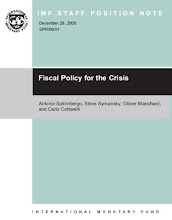Û Benchmark Indian equity indices viz. the BSE Sensex and the S&P CNX Nifty ended marginally down 0.88% and 1.55% respectively in a volatile week ended January 16, 2009
Û The week continued to be marred by the Satyam Computer Fiasco, as foreign funds continued their selling spree on weak sentiment for Indian corporate
Û For the week till January 15, foreign institutional investors (FIIs) sold equities worth Rs 1558 cr (around US$ 32 bn at current currency rate) in the current week compared to net selling of Rs 183 cr (US $ 4 bn) in previous week
Û Local mutual funds too mirrored FIIs, selling Rs 1361 cr (US$ 28 bn) worth of equities in the secondary market for the week
Û Markets however recouped most losses on value buying and after November industrial production data showed a 2.4% growth
Û Midcap and smallcap shares suffered comparatively more than large caps amid the negative sentiment, falling 3% and 4% respectively
Û Among major sectoral indices analysed on the BSE, it’s Oil & Gas, IT and Auto index bucked the weak trend to end higher
Û BSE Oil and Gas (up 2.7%) was the biggest sectoral gainer led by index heavyweight RIL which rose 5.6% and figured among top Nifty gainers on reports that NTPC will have to buy gas at $4.20 per mn British thermal unit from the company
Û News of a reunion between the two Ambani brothers viz. Mukesh and Anil and rumors that the promoters of RIL have increased their stake to 49% in Oct-Dec also prepped the positive sentiment for the stocks of Reliance as well as R-ADAG stocks.
Û Easing crude oil prices in the international market also helped sentiments for oil retailers
Û Crude oil price fell to US$36.51 a barrel on January 16 compared with around US$$42 a barrel in the previous weej as investors bet economic weakness would curb demand, expecting corporate earnings season to be fraught with bad news
Û The second biggest sectoral index on the BSE was the IT index (up 2.5%), riding on positive sentiment due to a higher-than-expected earnings report from Infosys, as well as on a report that SEZs set up by IT companies like Infosys, Wipro and TCS will be exempt from taxes on profits for the first five years.
Û HCL TECH was the biggest NIFTY gainer (up 10.4%), while Infosys rose 5.3%
Û Hope of demand revival for vehicles on expectation of a further fuel price cut by the government led the Auto shares up
Û Among losers, real estate shares were the worst hit on profit-taking as well as on renewed fears over corporate governance
Û Unitech was the worst affected on Nifty (down 18%) after rating agency Fitch downgraded the company's debt rating due to its continued delay in raising fundsMeanwhile bank shares fell on worries of growing nonperforming assets (NPAs)




